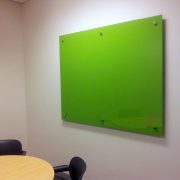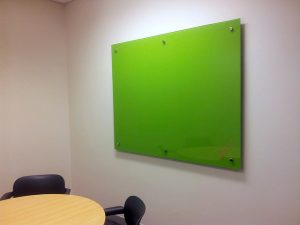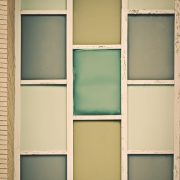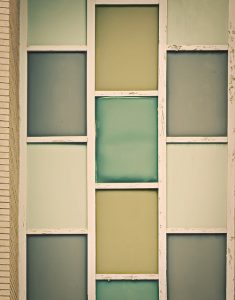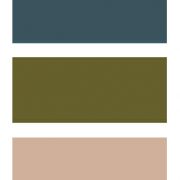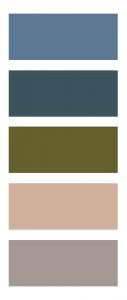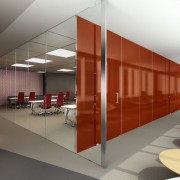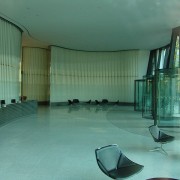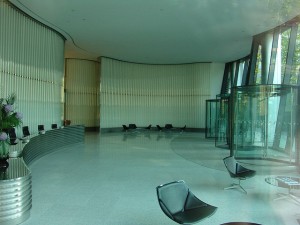Cool SOHO back painted glass idea
If you make regular use of a whiteboard – in your home office or in a conference room – you know what happens. The dry erase marker doesn’t get erased immediately, and it leaves marker residue behind. Over time, the residue builds up. Sometimes special whiteboard solvents will remove the marker. Eventually, the board gets dented or scratched, or someone uses a permanent marker on it. Goodbye, whiteboard! (And whiteboards are not cheap.)
Back painted glass makes a great whiteboard
Here’s an easy, economical substitute for a whiteboard. The best part is that it will last longer, clean up better and cost less than the white boards you find in the store.
Take a sheet of ordinary float glass and cut it to your preferred size. Float glass does come in standard sizes, so if a standard size will work, you can skip the cutting altogether. The glass shop can also buff the edges of the glass to remove any sharp sides or corners. If you’re worried about breakage, you can also use tempered glass.
Paint one side of the glass with Glassprimer™ glass paint. Use any color you like, but a shade of white may work best for this application. Add as many coats as needed to achieve your desired opacity.
Once the paint is dry, you can apply the glass to a wall using any common neutral-cure silicone adhesive. The adhesive will not show through the paint, and is strong enough to hold the glass in place.
Ta-da! You have a permanent whiteboard that will not dent, or accumulate dry erase marker ink. You no longer need to use any special solvents to remove the dry erase ink. That’s because glass is impervious. The ink cannot not stain the board because the glass won’t absorb it.
If you’d like more information about back painted glass, or would like to order glass paint, please visit our online store at http://www.glasspaint.com.
Photo Credit: Rae Allen, via Flickr

